I decided to use pigments for the first time. I already read the MIG-article on pigments, but I think there are still a few basic questions left.
Hope someone can clarify these ones for me:
1. I understand that there are two ways applying pigments. Dry or with the help of turpentine. Do you have to apply the turpentine after you used trhe pigments and isn't there the risk of washing them away?
2. Once to applied the pigments do to still seal the model with flat cote?
Doesn' t that for example destroy the dusty look?
3. What medium is better for applying: Turpentine or acrylic thinner?
I'm also looking for further tips on this topic. So if you guys know some additional links/articles don't hesitate to post them





























